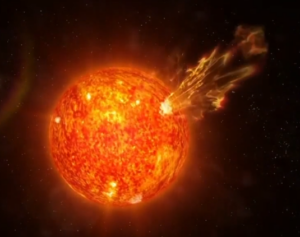The Cosmic Impact on Our Economy: Solar Cycles and Asteroids Facing Earth
As we look ahead to the coming decade, the interplay between cosmic events and the economy becomes increasingly relevant. Today, we dive into two fascinating topics that have piqued the curiosity of many: the solar cycle and a potentially hazardous asteroid expected to approach Earth in 2032. Insights from our proprietary Socrates AI system give us a unique perspective that could shape your understanding of these events.
Solar Cycles: What Should We Expect?
Recent predictions from NASA indicate that the upcoming solar maximum may not be as intense as previous cycles. However, our advanced modeling suggests otherwise. According to our findings, we anticipate a stronger solar maximum set to peak around 2025.
Why Does This Matter?
Increased solar activity can have a multitude of effects on our planet, from disruptions in satellite communications to significant impacts on power grids. The influence of solar flares does not stop at technology; they can also affect commodity markets, including agriculture and energy. As the sun’s energy levels rise, we could see fluctuations in crop yields and energy prices, affecting everything from food costs to your utility bills.
At Extreme Investor Network, we believe that understanding these patterns can help investors position themselves wisely. For instance, sectors like renewable energy may flourish, while traditional energy sectors might face new challenges.
The 2032 Asteroid: A Wake-Up Call?
Concerns about an asteroid on a potential collision course with Earth in 2032 have also garnered much attention. While NASA currently assesses the likelihood of impact to be less than 3%, our analysis suggests this number might be underestimated. Ongoing research is already focused on possible mitigation strategies, indicating that the event could be more significant than currently communicated.
The Bigger Picture
It’s crucial to recognize that cosmic events often resonate beyond their immediate physicality. Economically, the fear or anticipation of such events can trigger market volatility, impacting everything from investor confidence to global trade. Our proprietary Socrates system is closely monitoring these trends and their potential implications for asset classes across the board.
Connecting the Dots: A Broader Economic Cycle
Interestingly, both the solar maximum and the asteroid forecast connect to a broader cycle observed in economic history—the 8.6-year fractal cycle. This cycle is intertwined with the precession of the equinox, which lasts nearly 25,800 years. The convergence of solar activity increases and the potential asteroid event in 2032 may be signaling a critical moment in this cycle, making it profoundly significant for investors to analyze.
Conclusion: Prepare for the Future
As we explore the cosmic forces that shape our economic landscape, it becomes evident that awareness is key. At Extreme Investor Network, we are committed to empowering you with knowledge and insights that can help capitalize on these trends. Understanding the interplay between solar activity, potential asteroid impacts, and the broader economic cycles can better inform your investment strategies.
Don’t leave your financial well-being to chance; stay informed and prepared. Be sure to explore our resources and insights to navigate the complexities of the future landscape effectively. The cosmos could have unforeseen effects on our economy, and being a proactive investor means staying one step ahead.

